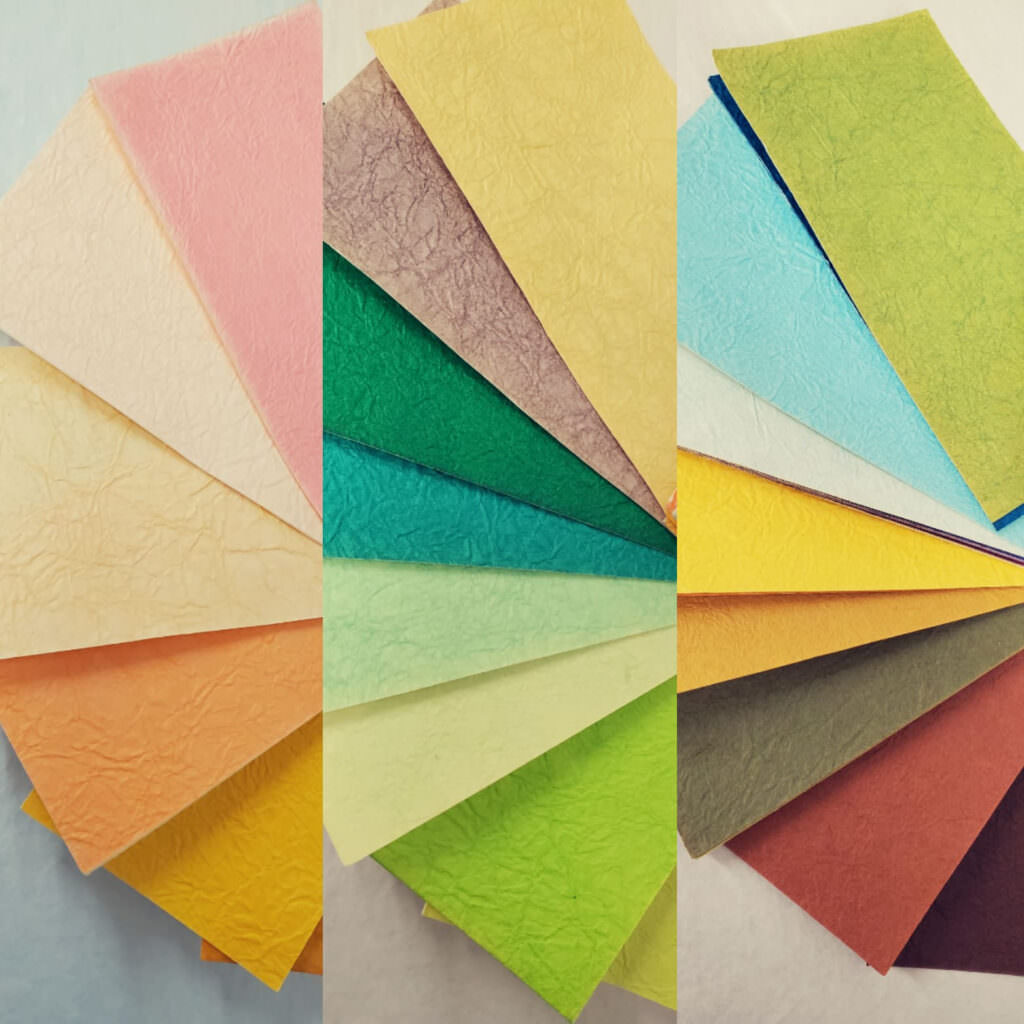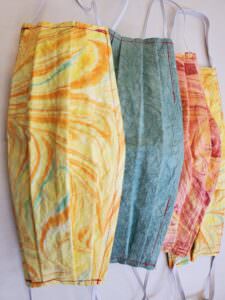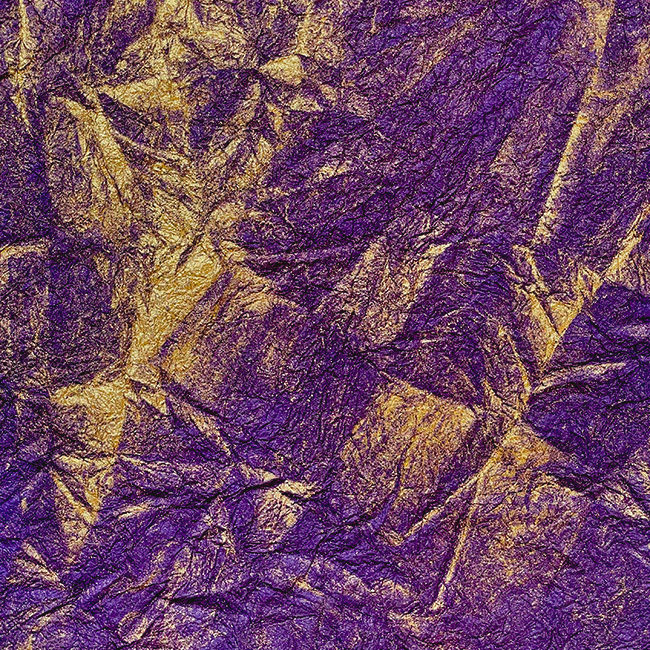Not all crinkled paper is made the same….. and not all crinkled paper is referred to in quite the same way.
What does “momigami“ refer to?
The word “momi” literally means “crinkled” or “kneaded”- It’s a descriptor for the following noun “kami” or “gami” (as a suffix) meaning “paper”. In Japanese “shi” is also used a suffix meaning “paper”. “Momu” is the verb “to knead” in Japanese.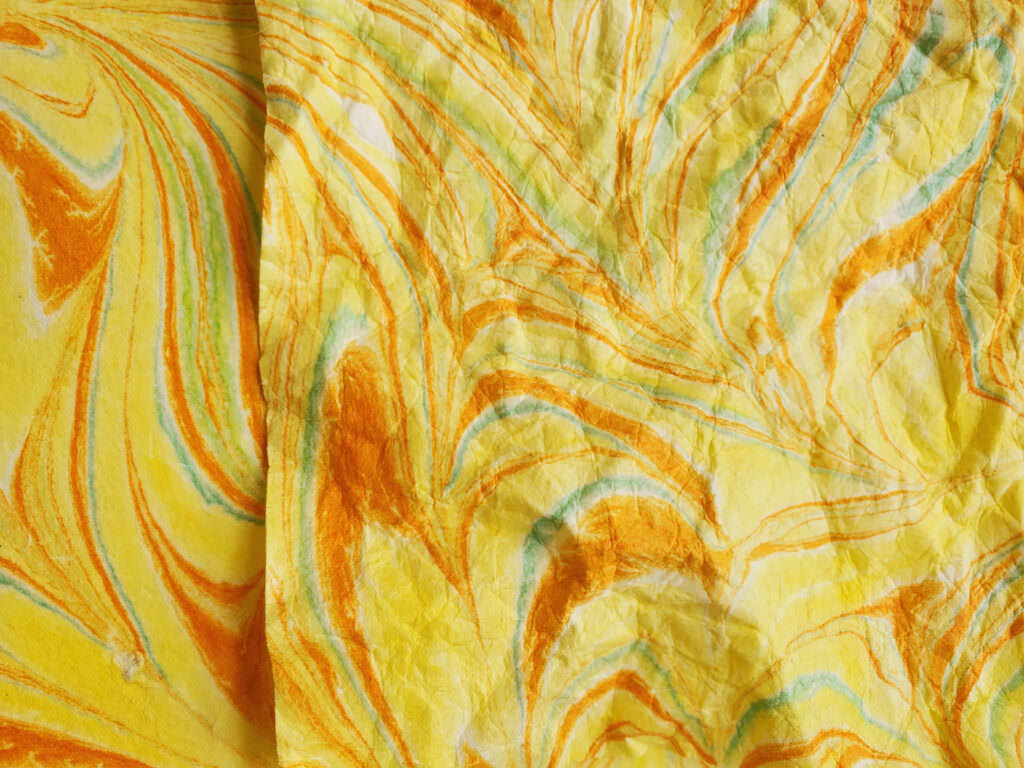
There is hand-crinkled paper, typically using “the one-fist-at-a-time” method.
That’s how we crinkled this heavyweight marbled kōzo paper for facemasks we sewed on a sewing machine. The sheets became softer and more fabric-like the more we crinkled them. The masks were quite comfortable on one’s face; the paper was soft for the skin.
The image below shows our vintage Momi Kōzo Papers recently added to our shop. The more fancy metallic version are now up on our shop too: Fancy Momi Kōzo Papers. These 2-ply papers are crinkled and dyed on the “front” side, and also have a flat (un-crinkled), white backing.
Here’s a little video of crinkling paper mask crinkling
Absolutely any paper can be crinkled, and can be called “momigami“. However, in the world of washi (Japanese paper), we typically see momigami made with a large dyed piece of kōzo paper sometimes known as “mingeishi‘. When washi is creped with a tool (instead of the hand) then the paper is referred to as creped in English, however, Japanese it can still be referred to as “momi-something”. 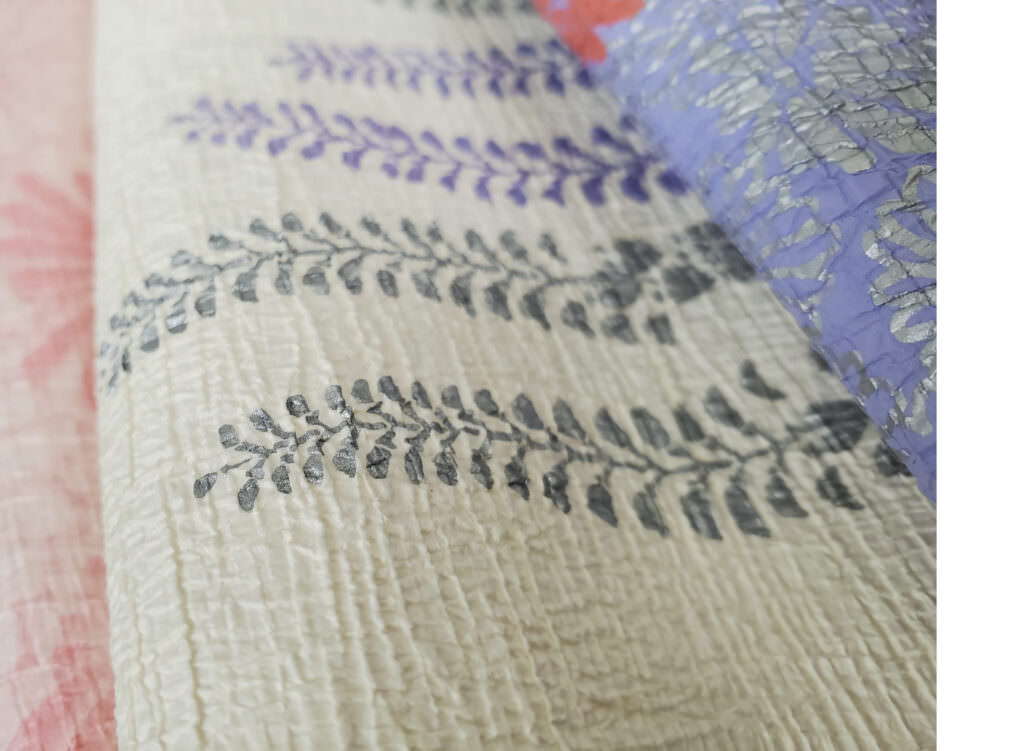 For example above here is an image of “momi chiyogami” or chirimen- gami . chirimen (creped) gami or kami for paper. Momi chiyogami is crinkled or creped with a straight bar tool; using a tool like a stick or bar, allows you to crinkle or crepe paper a little more evenly; like image above.
For example above here is an image of “momi chiyogami” or chirimen- gami . chirimen (creped) gami or kami for paper. Momi chiyogami is crinkled or creped with a straight bar tool; using a tool like a stick or bar, allows you to crinkle or crepe paper a little more evenly; like image above.
 Above is a before and after photo of turning regular wrapping paper into a creped paper by using a large, traditional, very analogue creping process.
Above is a before and after photo of turning regular wrapping paper into a creped paper by using a large, traditional, very analogue creping process.
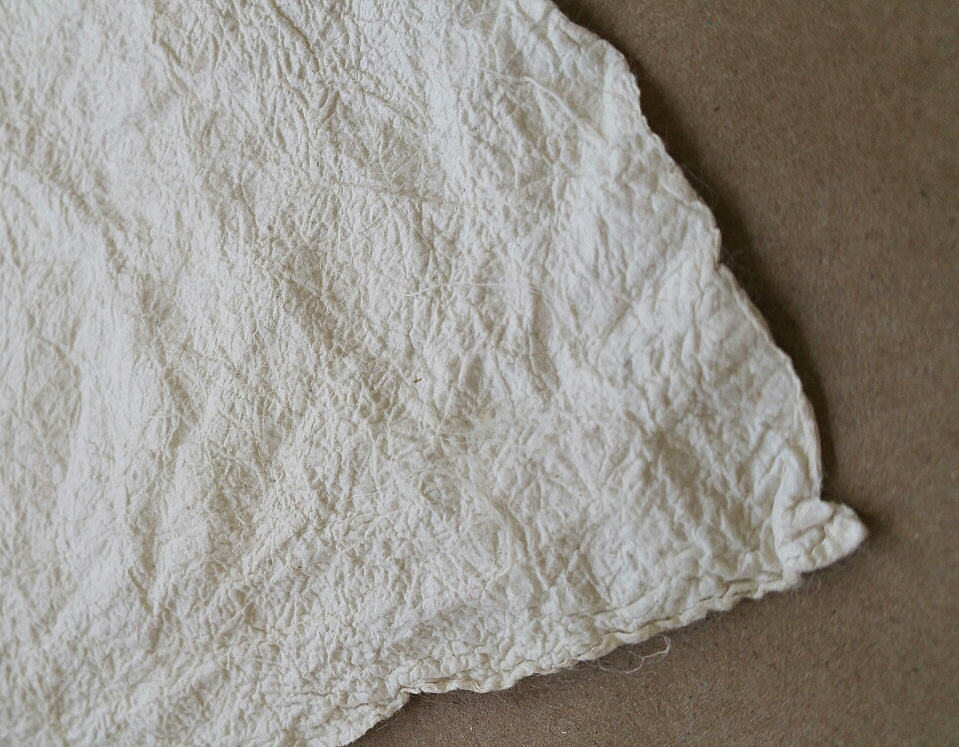 What does “kyōseishi“ refer to? Kyōseishi = Momigami with starch. In this case, “kyōsei” means “strengthened”.
What does “kyōseishi“ refer to? Kyōseishi = Momigami with starch. In this case, “kyōsei” means “strengthened”.
The correct word for to refer to a paper both crinkled and starched with konjac or konnyaku is kyōseishi or sometimes “kamiko” if made into large extended lengths of kyoseishi. 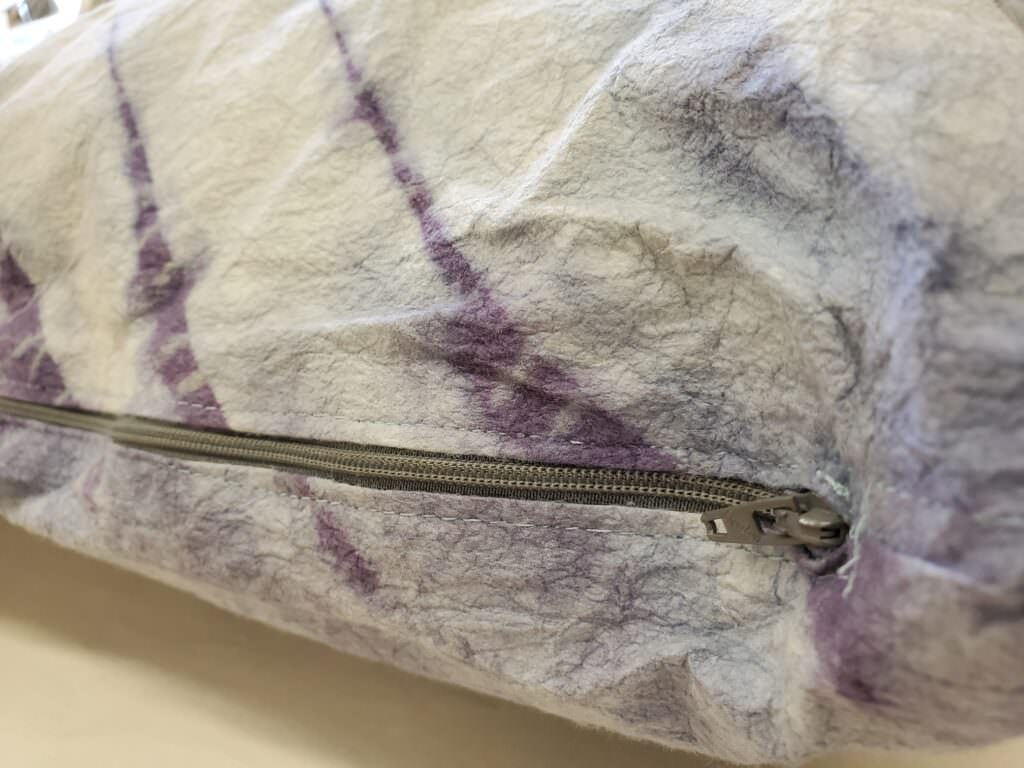 The photo above depicts a beautiful pillow made out of kyōseishi.
The photo above depicts a beautiful pillow made out of kyōseishi.
Here’s a little video on the toughness of kyōsei
We also have these gorgeous starched papers covered with gold leaf dust- they are called Kindeishi or (kin) “gold” (dei) “mud” (shi) “paper”: in English their nickname is “muddy gold paper“.
They are basically very starched kyōseishi with gold leaf dust.
What is “joomchi“ ? Is an ancient Korean craft and the best translation is felted paper, but instead of felting with soap, which one would use with wool, only water and good quality kōzo paper is necessary. Image below depicts the craft of joomchi.
Click here for more of our blog posts related to joomchi. 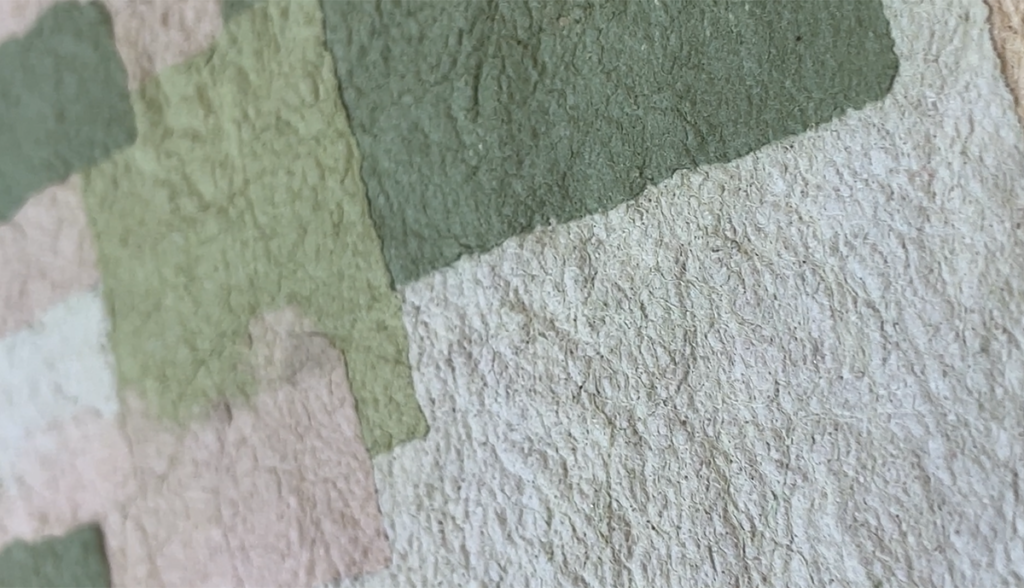
MORE PAPER VOCAB!
The word “kōzo” is the Japanese word for the paper mulberry fiber made from what is known in English as the paper mulberry bush or (Broussonetia papyrifera).
The Korean word is “cham dak”.
The majority of hanji happens to be made from paper mulberry fiber.

